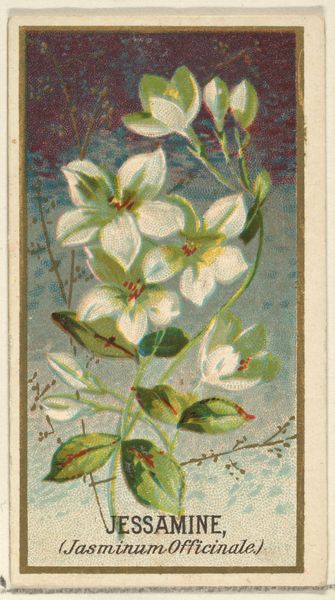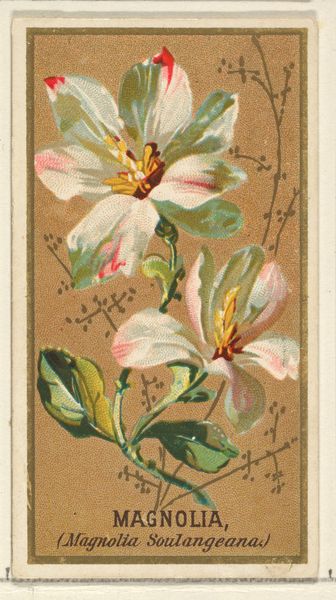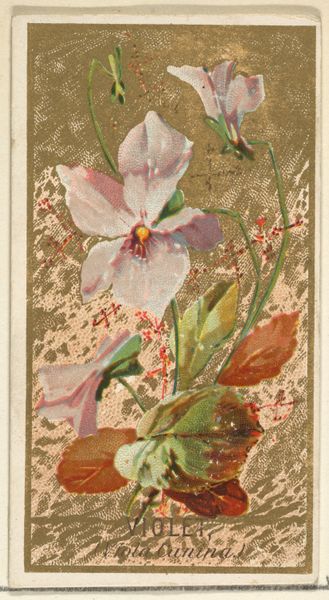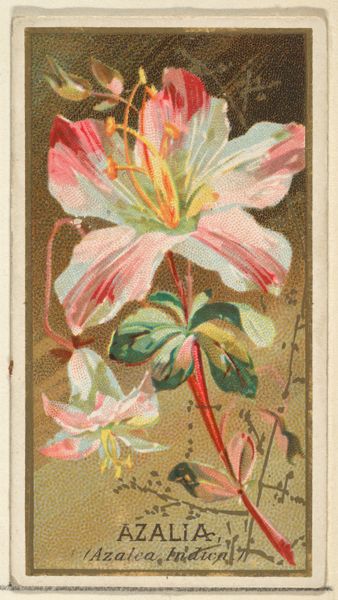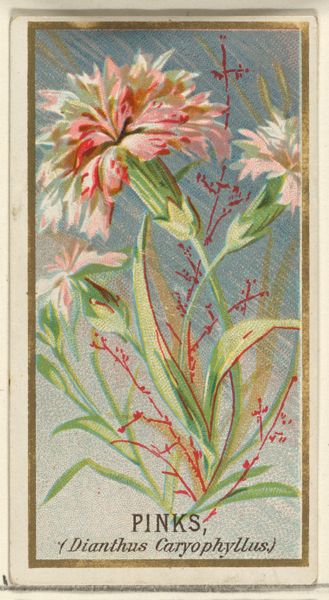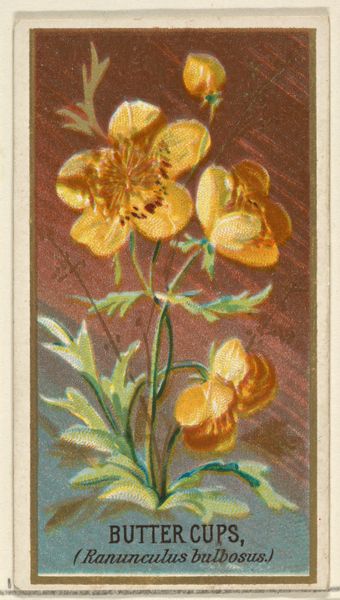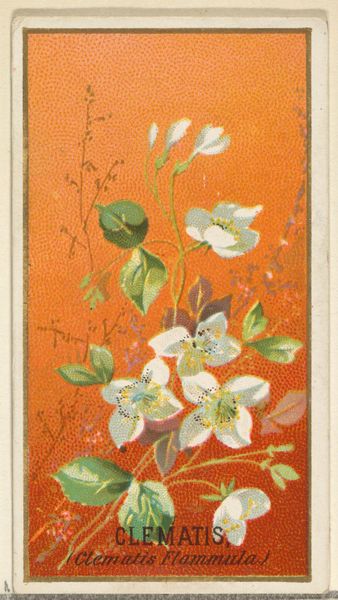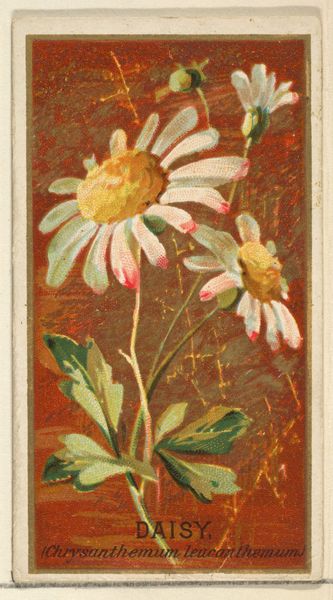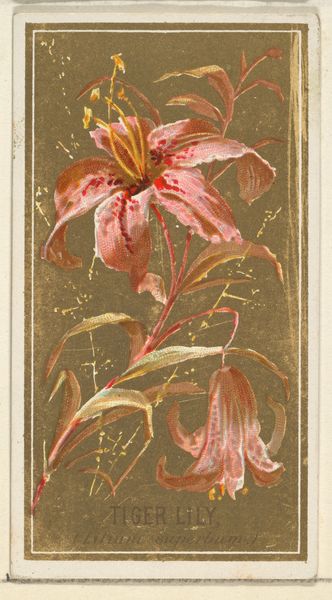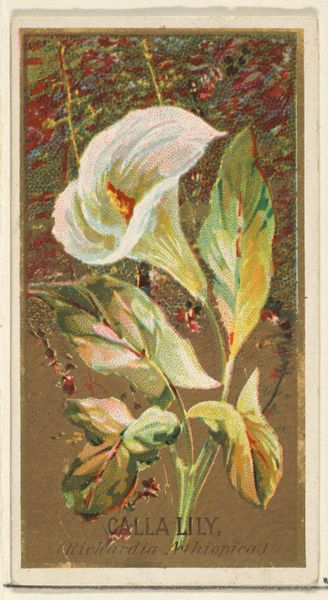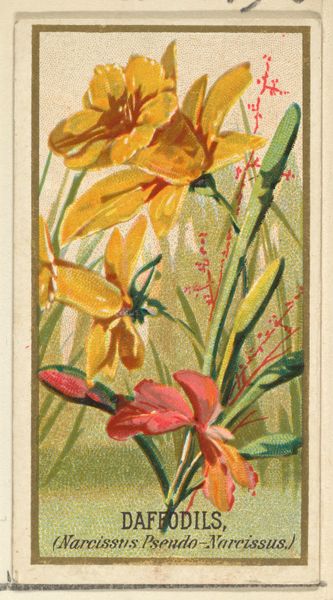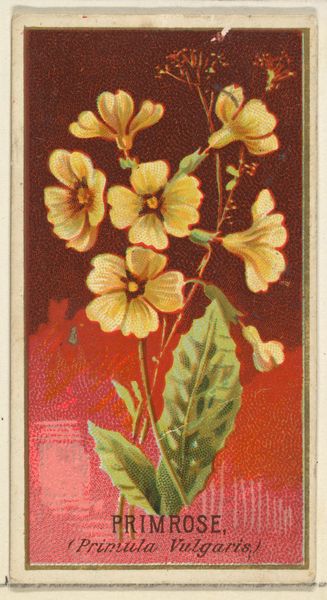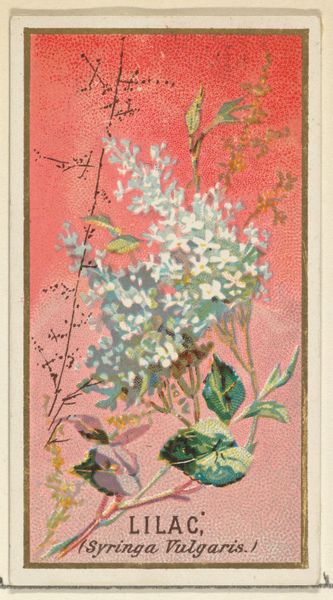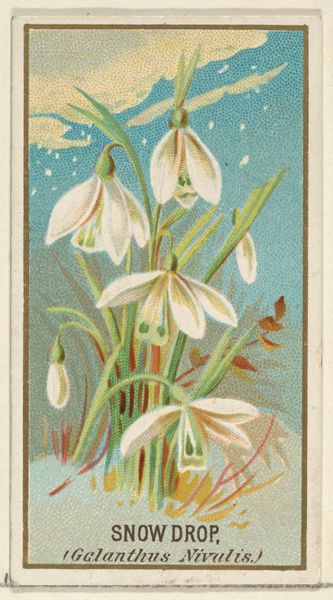
Mock orange (Philadelphus coronarius), from the Flowers series for Old Judge Cigarettes 1890
0:00
0:00
drawing, lithograph, print
#
drawing
#
lithograph
# print
#
impressionism
#
earthenware
#
watercolour illustration
#
botanical art
Dimensions: sheet: 2 3/4 x 1 1/2 in. (7 x 3.8 cm)
Copyright: Public Domain
Curator: This little piece is "Mock orange (Philadelphus coronarius)" created around 1890 by Goodwin & Company, currently residing at The Met. What strikes you immediately about this print? Editor: It feels quaint, almost aggressively so. Like an artifact preserved perfectly in amber. It’s a very intimate botanical study with a distinctly manufactured sheen. Curator: Well, that manufactured feeling is precisely the point. It was part of the "Flowers" series, created for Old Judge Cigarettes. Lithography was essential here – think about the process, mass-produced prints tucked into cigarette packs. Not exactly high art initially. Editor: Right, so this was effectively advertising material, elevating the quotidian act of smoking via association with idealized nature. How were these prints received? Curator: They had a functional, disposable purpose initially. But, consider how the mass production impacted artistry itself. Lithography democratized image creation but also linked it tightly with consumption. The question becomes, did that inherently diminish the image? Editor: That's a sharp point. On the one hand, it became accessible, distributed far and wide. But simultaneously it's intrinsically bound to this industry. Were other techniques considered? Why lithography, and what kind of lithographic process are we talking about here? Curator: Lithography offered the vibrancy of color with relative ease, enabling high volumes at low cost, crucial for cigarette card production. The aesthetic aims for something akin to watercolor illustration—look at those layered strokes, soft gradations. The aim isn't cold commercialism, but aspiration. How do you perceive it now? Editor: With fresh appreciation, actually. Recognizing this not just as a charming flower print, but also a micro-history of commerce, art and industry melding together at a very specific time. Curator: Agreed. And that intersection defines so much of art's evolution—the tangible collision of labor, materials, and, indeed, the society that surrounds it. Editor: Absolutely, this little slip of paper truly captures its era in unexpected ways.
Comments
No comments
Be the first to comment and join the conversation on the ultimate creative platform.
